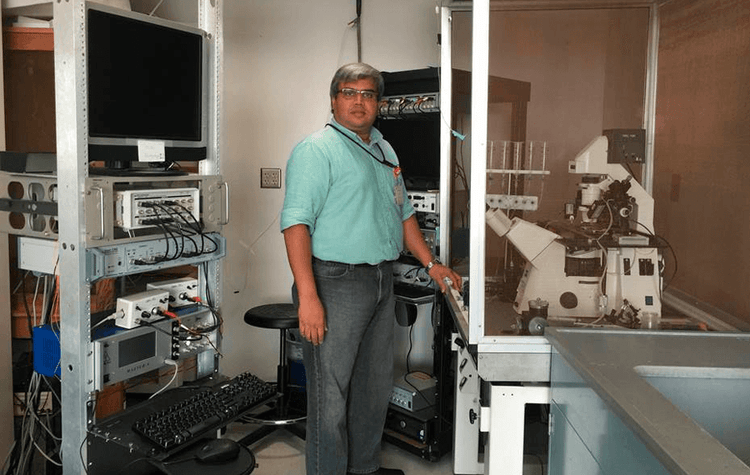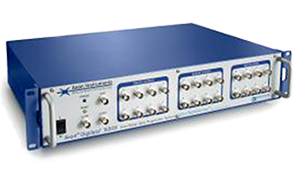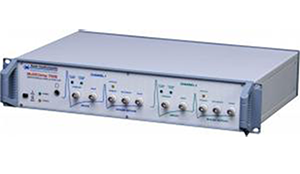
University of Texas uses the Axon Patch-Clamp Systems to evaluate signaling mechanisms in the brain underlying memory and recall
"The beauty of using protocols in Clampex (a module in pCLAMP Software) is that you can program your system to control both stimulation and recording, making the whole system powerful and unique. More importantly is the versatility as you can input many different stimulating strategies, all under the control of Clampex."
Dr. Balaji Krishnan
COMPANY/UNIVERSITY
Mitchell Center for Neurodegenerative Diseases at The University of Texas Medical Branch
TEAM MEMBERS
Balaji Krishnan, PhD, Assistant Professor
PRODUCTS USED
MultiClamp 700B Microelectrode Amplifier
Axon Digidata 1550B Low-Noise Data Acquisition System plus HumSilencer
pCLAMP 11 Software Suite
The Challenge

The Solution
- Alzheimer’s disease (AD), the most common and severe age-associated neurodegenerative dementia
- Currently there is no cure and the need to identify innovative targets for prevention and treatment are urgently needed

pCLAMP 11 Software Suite

Axon Digidata 1550B Low-Noise Data Acquisition System plus HumSilencer

MultiClamp 700B Microelectrode Amplifier
Products Used
Equipped with up to four HumSilencer™ channels, the Axon™ Digidata® 1550B Low Noise Data Acquisition System enables you to record multiple cells at once for cellular network studies without 50/60 Hz line-frequency noise.
The MultiClamp™ 700B Microelectrode Amplifier is a versatile, computer-controlled microelectrode amplifier designed for patch voltage-clamp (resistive-feedback, four ranges) or high-speed current clamp (voltage-follower, three ranges) recording within the same headstage. Many automated functions and effective signal conditioning. Ideal for many applications, including high-speed current clamp (sharp-electrode or field potentials), patch clamp (whole-cell, macro-patch, or excised patch), voltammetry/amperometry, ion-selective measurements and bilayer recordings.
The Results
Dr. Krishnan uses Two MultiClamp 700B Microelectrode Amplifiers, Axon Digidata 1550A System with HumSilencer, Axon Digidata 1332A System, Axon pCLAMP 10 Electrophysiology Data Acquisition and Analysis Software to:
- Uncover peripheral circadian rhythms of smell in Drosophila melanogaster, the first proof of a functional change in the peripheral oscillator governing circadian rhythms.
- Analyze synaptic function in the amygdala, which controls long term memory expression of aversive and appetitive memories.
- Evaluate how disruption of synaptic function in the hippocampus forms the basis of early events in neurodegenerative states resulting in pathological memory loss.
References
View our webinar with Dr. Krishnan: Using Electrophysiological Studies to Accelerate Mechanistic Study in Reception and Transmission
Abstract from his research at the Neuroscience 2016 meeting